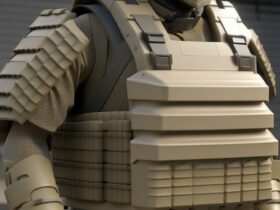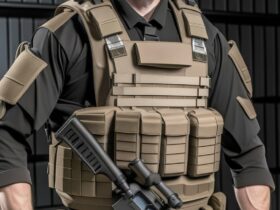Innovations in Tactical Armor: Advancements in Protection for First Responders
First responders, including law enforcement officers, firefighters, and paramedics, often find themselves in dangerous and hostile environments where having the right protective gear can mean the difference between life and death. As technology continues to advance, so does the level of protection available to these brave men and women. Innovations in tactical armor have been a game changer for first responders, providing them with improved protection and functionality in the line of duty.
One of the key advancements in tactical armor is the use of advanced materials such as aramid fibers, ceramics, and high-density plastics. These materials offer superior strength and lightweight properties, allowing for the development of armor that provides high levels of protection without compromising mobility and agility. This is crucial for first responders who need to be able to move quickly and effectively in challenging situations.
Furthermore, advancements in design and construction techniques have led to the development of armor that is both flexible and breathable, providing comfort and ease of movement for the wearer. This is particularly important for long hours of wear during high-stress situations.
Another innovation in tactical armor is the integration of advanced technologies. For example, some tactical vests now feature integrated communication systems, allowing first responders to stay connected with their team members and receive critical information in real-time. Other advancements include the integration of body-worn cameras, GPS tracking, and medical monitoring systems, providing essential data and information for situational awareness and post-incident analysis.
In addition to personal protective equipment, vehicle armor has also seen significant advancements. Armored vehicles used by law enforcement and military personnel are now equipped with advanced composite materials and ballistic-resistant glass, providing enhanced protection against various threats, including small arms fire, improvised explosive devices, and ambush attacks.
Furthermore, advancements in 3D printing technology have opened up new possibilities for custom-fitted armor and rapid prototyping of new designs. This allows for a more personalized and tailored approach to providing protective gear to first responders, ensuring a better fit and overall comfort, which can ultimately enhance their performance in the field.
While these advancements in tactical armor offer significant benefits, it’s important to note that ongoing research and development are crucial to staying ahead of emerging threats and challenges faced by first responders. As threats continue to evolve, so too must the protective gear available to those on the front lines.
In conclusion, innovations in tactical armor have revolutionized the level of protection available to first responders. With advancements in materials, design, and technology, first responders now have access to highly advanced protective gear that can provide them with the confidence and protection they need to carry out their vital duties. As technology continues to evolve, we can expect to see even greater advancements in the field of tactical armor, ensuring that first responders have the best possible protection in the face of danger.






Leave a Reply